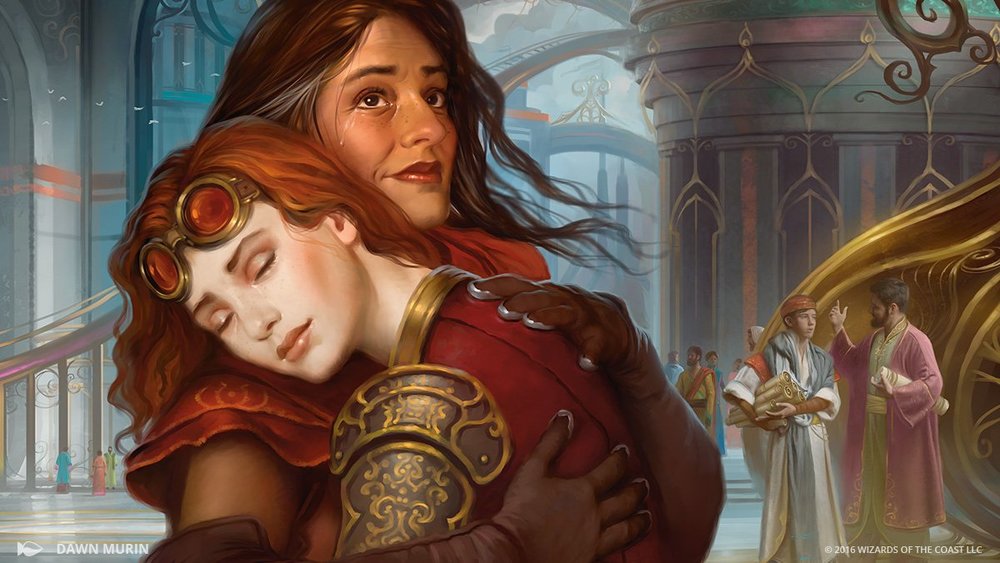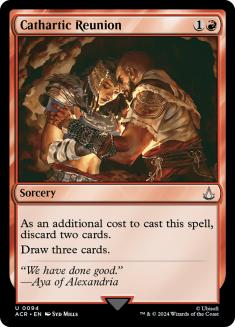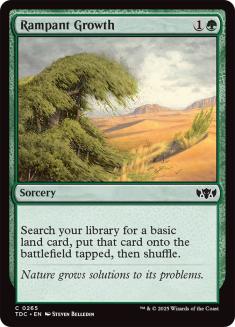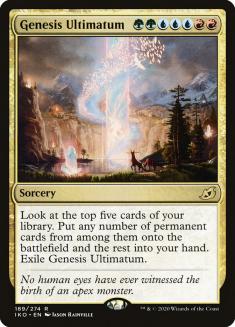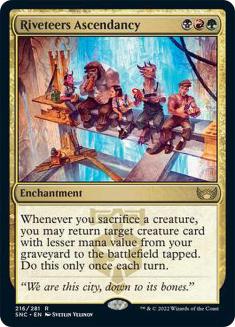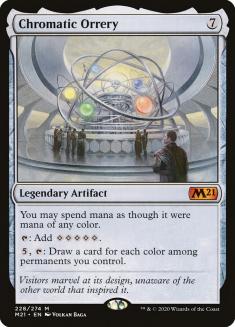Hello folks, and welcome back to my collaborative column with John Dale Beety here on Star City Games, exploring the intersection of art and Magic: The Gathering through our collective experiences. If you missed our first articles on the idea of Commander as Camp, you can find “Notes on Commander as ‘Camp'” over on Hipsters of the Coast and “Camp In Commander: How To Find Flavorful Fun” below.
Today we look deep within and far outside of Magic. Over on Hipsters of the Coast, we’ve written about our experiences as patrons commissioning Magic: The Gathering-related items. That article explores taking Magic cards off the table and bringing them into the physical world.
As a companion, today on Star City Games we’re taking a look at things from the real world, particularly art and architecture, that have inspired art on Magic cards. We’ll go in rough chronological order, highlighting some of our favorite examples from Magic’s history.
Cathartic Reunion / Return of the Prodigal Son
An essential discard-draw spell, Cathartic Reunion has a rare subject for Magic art: a hug. In all printings save one, it’s the hug between Pia Nalaar and her daughter Chandra Nalaar, whom she last saw being led to an execution that, unbeknownst to Pia, never took place because Chandra’s planeswalker spark ignited. Years of trauma for Pia, half a lifetime of it for Chandra, all leading to one moment, one embrace. A Cathartic Reunion, indeed.
Another embrace between a parent and a long-lost child has long been a favorite subject of Christian religious art.
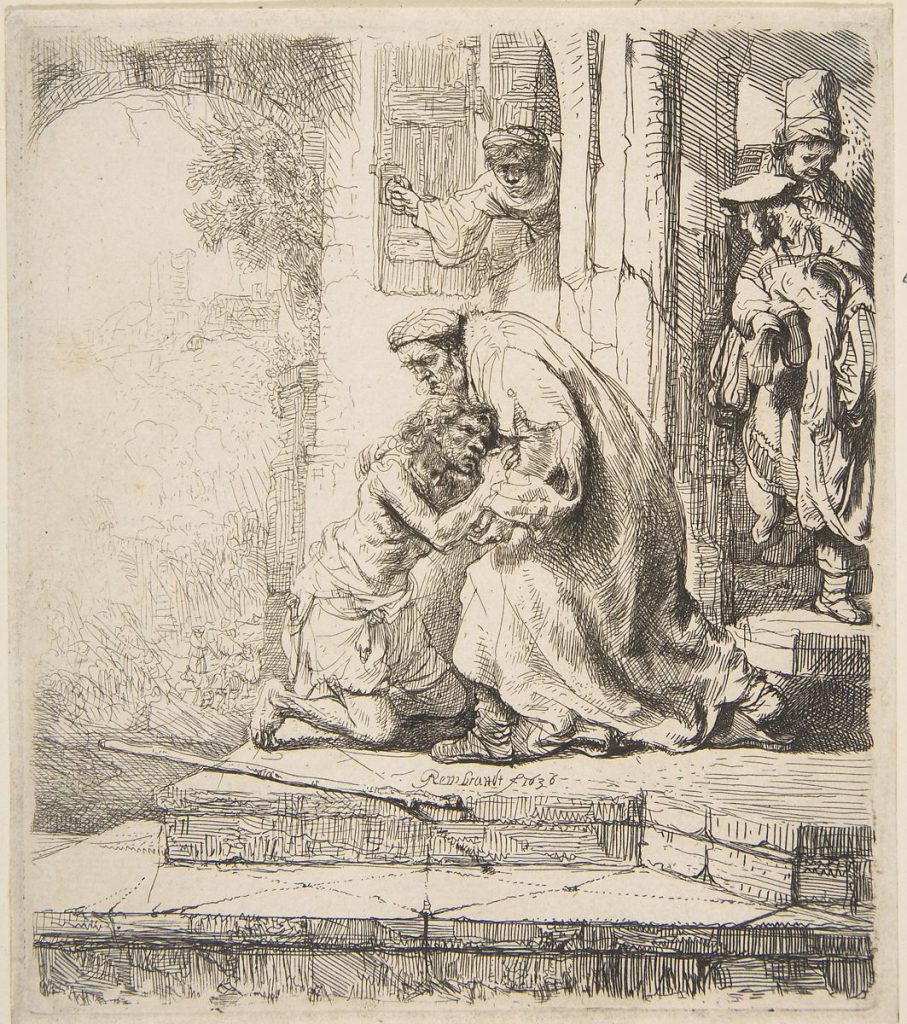
The Parable of the Prodigal Son is a story of loss and of grace. Though the prodigal left home and wasted his inheritance, the father still sees his wayward son’s return as a boon. The story has been popular in Christian religious art since medieval times (the Louvre has a thirteenth-century example in ivory). Great artists such as Rembrandt have depicted scenes from the parable, in multiple forms in Rembrandt’s case.
Howard Lyon, the original illustrator of Cathartic Reunion, knows full well the power of the parable. Not only did he receive formal training in illustration and art history, he is also a painter of religious art, and religious themes abound in his print store. [JDB’s disclaimer: I have commissioned a Howard Lyon drawing in the past.]
Magic players know the Nalaars’ separation in time and distance through the flavor text. We see the relief of the prodigal and the parent’s tearful joy. The parable and its many artistic renditions give what could’ve been a simple illustration the weight of their echo.
Rampant Growth / The Great Wave off Kanagawa
Since its first appearance in Mirage, Rampant Growth has been printed over two dozen times in English-language sets. While several artists have illustrated the classic two-mana ramp spell and perennial Commander favorite, Steven Belledin’s version has appeared on the majority of those printings.
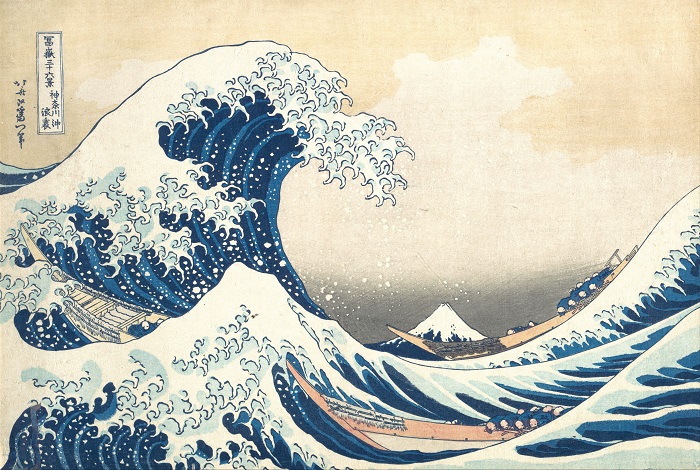
Steven Belledin’s version of Rampant Growth pays direct homage to a Japanese print that’s nearly two centuries old. The Great Wave off Kanagawa, by Hokusai, dates to 1830 to 1833 or so. It is one of his Thirty-Six Views of Mount Fuji; the famous mountain is far in the background, dwarfed by the wave.
The Great Wave off Kanagawa gained worldwide fame after Hokusai’s death. After 1850, Japan ended a period of self-imposed isolation and began trading again with much of the world. Japanese woodblock prints inspired the Impressionists of late 19th century France, part of the Japonisme craze for Japanese objects.
Since then, many artists worldwide have taken more direct inspiration from Hokusai’s print. Steven Belledin freely admitted the influence in a 2011 blog post; the post is well worth a deep read for an artist’s perspective on such homages. And in an unusual turn of events, The Great Wave off Kanagawa will soon appear on Japanese 1000-yen banknotes; in a couple of years, it will be possible to purchase a Rampant Growth paying tribute to The Great Wave off Kanagawa with a banknote doing the same!
Genesis Ultimatum / Among the Sierra Nevada, California
The wilderness of Ikoria is home to many strange creatures. With Magic having only visited for a single set, there is still much to explore on the plane.
The Ultimatum cycle of Ikoria: Lair of Behemoths completed the one started on Alara. Genesis Ultimatum depicts the birth of an Apex monster of Ikoria. Deep in the countryside, Rainville has shown this contemporary divine event with a zeitgeist 150 years its elder, rooted in the Romantic movement of the mid-19th century and inspired by one of the greatest painters of that era.
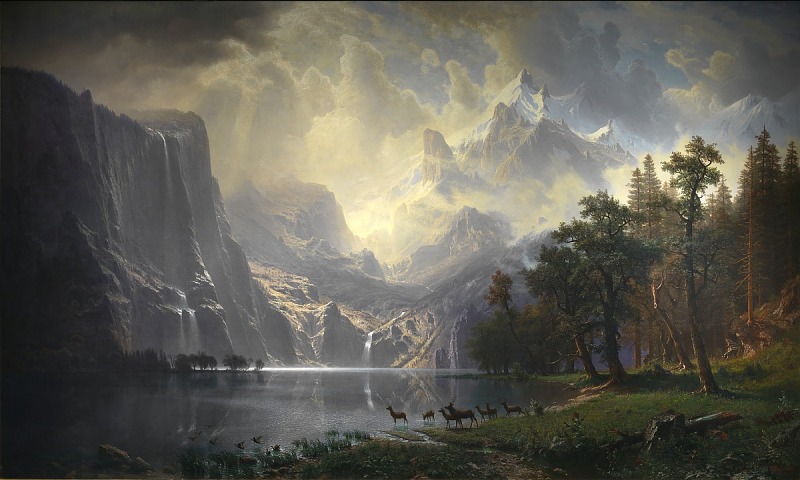
Albert Bierstadt was a German-American artist and a key member of the second generation of the Hudson River School artistic movement. Most of his work depicts the American West in the second half of the 19th century. As the United States expanded west towards California, Bierstadt and others created huge landscapes depicting the new places they saw, which were largely well-received as monuments to these new “discoveries.”
Bierstadt is one of the quintessential American Romantic painters, and his influence can be seen in landscapes across Magic’s history. One could very well write an entire article on his contemporary parallels; perhaps we will.
Riveteers Ascendancy / Lunch atop a Skyscraper
Riveteers Ascendancy’s two artworks are callbacks to the famous photo Lunch atop a Skyscraper. It’s one of the most widely circulated and influential photos to come out of the Great Depression era.

Seen here are eleven immigrant ironworkers, 850 feet above the ground, during the construction of the RCA Building in Manhattan in New York in 1932. The publicity-stunt image was taken by an unknown photographer (there are several possibilities) and published as a promotional piece. It’s now just a decade from turning 100 years old and still one of the most recognizable photographs in history.

Its adaptation to Magic comes as a representation of the Riveteers. As the Planeswalker’s Guide to Streets of New Capenna describes them:
Those last three descriptors, loyalty, strength in numbers, and mutual support, are the same three things that kept immigrant and Indigenous communities – Irish, Italians, Scandinavians, Eastern Europeans, Germans, Kanienʼkehá꞉ka or Mohawk – together through the tumult of the Great Depression. Without their blood, sweat, and in many cases lives (five men died during the RCA building construction), the New York City skyline – and a 2018 Creature Collection playmat from Star City Games – would look very different.
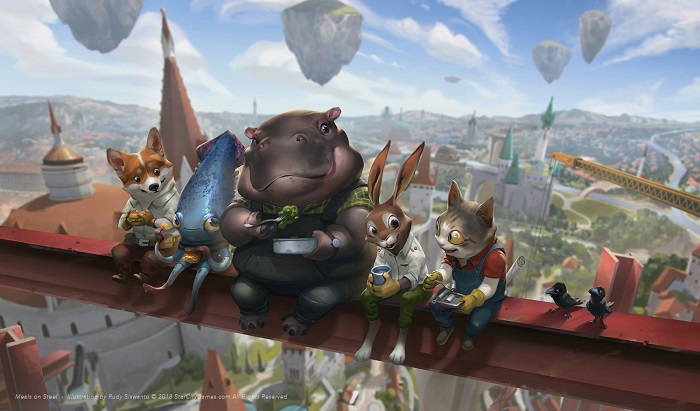
While we don’t know the Magic characters seen on Riveteers Ascendancy, great effort has gone into identifying those we see in Lunch atop a Skyscraper, and continues today.
Chromatic Orrery / The Atomium
Chromatic Orrery debuted in Core Set 2021, Magic’s core set released during the pandemic summer of 2020. One of the set’s most-played cards, it shows an orrery, loosely defined as a mechanical model of a system (often a solar system) on display at an event. The illustration shows visitors marveling at the structure, which appears to be a testament to progress and discovery.
This certainly sounds like the premise of something we might know as a Universal Exhibition, or more popularly, World’s Fair. This tradition began with the Great Exhibition in London in 1851, and continued with regularity through the 19th and 20th centuries, often including a landmark that echoed the theme of that year’s event.
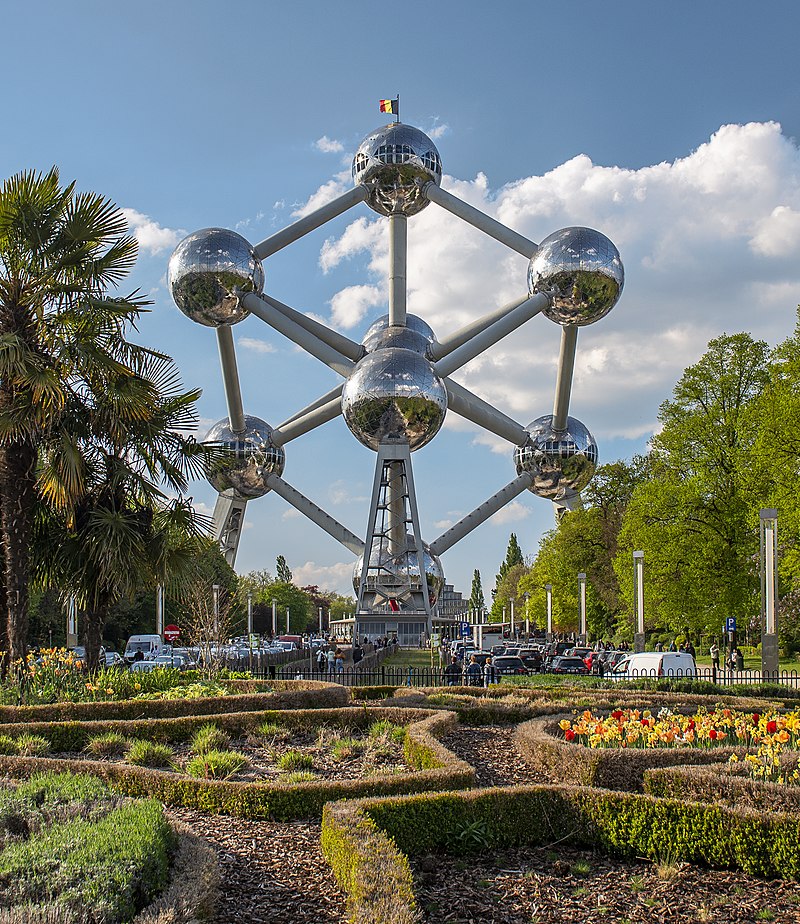
The Atomium was the central pavilion for the 1958 Brussels World’s Fair, known to history simply as Expo 58. The Expo 58 theme was A World View: A New Humanism; the 335-foot-tall unit cell of an iron crystal honored scientific progress while also raising questions about atomic research. It is now one of the most popular places to visit in Belgium.
Reality in Fantasy
These are but a handful of the bits of reality we see in our Magic: The Gathering fantasy. Their inclusion provides a touch of realism, a window into the larger imaginative realism genre that makes up the artwork for the game, and inspires artists to simultaneously look both backwards and forwards as they create these new worlds.
Isaac Newton once said, “If I have seen further, it is by standing on the shoulders of giants.”
What is true in science is no less true in the world of art.
We hope you enjoyed this look outside the frame, and John Dale and I will be back next quarter with another pair of articles looking at Great Cards with Underappreciated Art alongside Great Art on Underplayed Cards. Thanks for reading, and we’ll see you next time.

